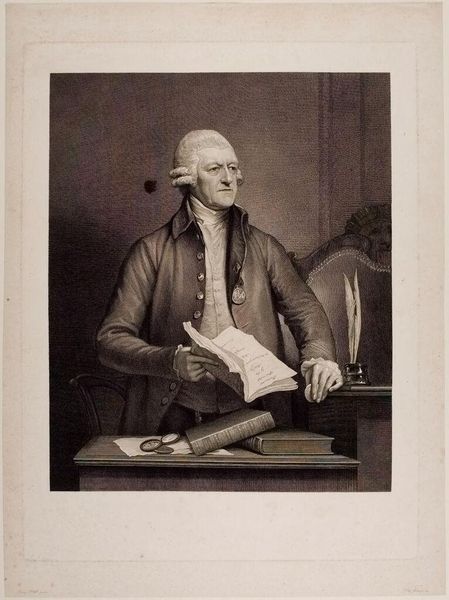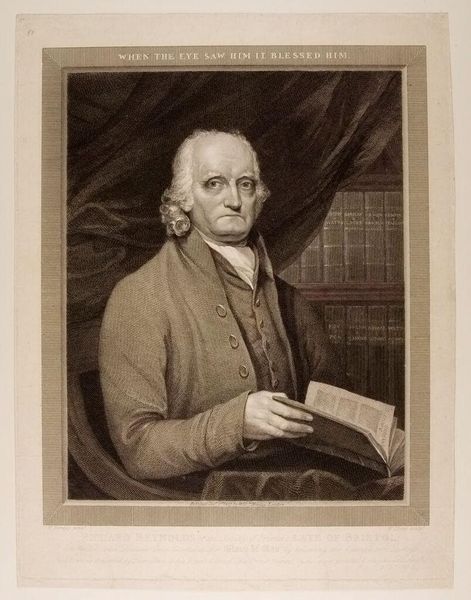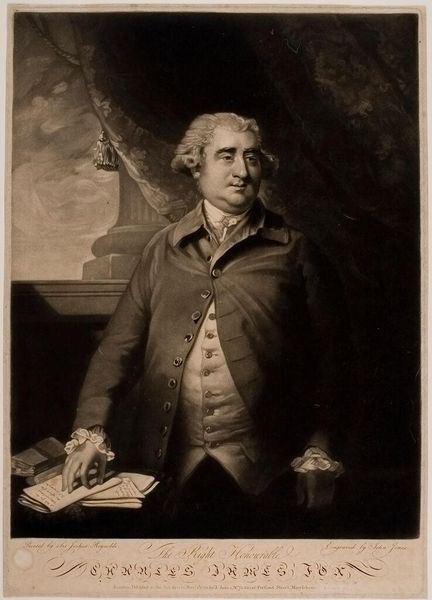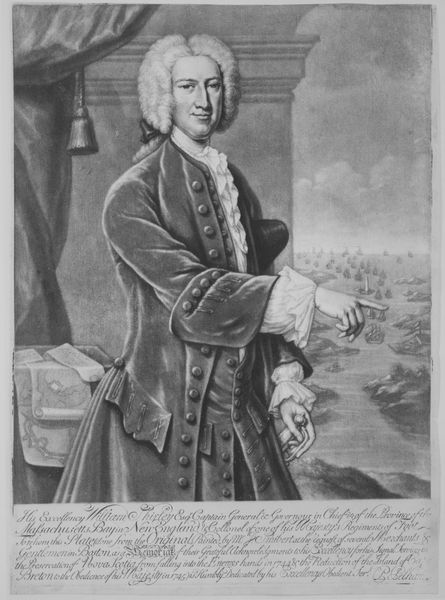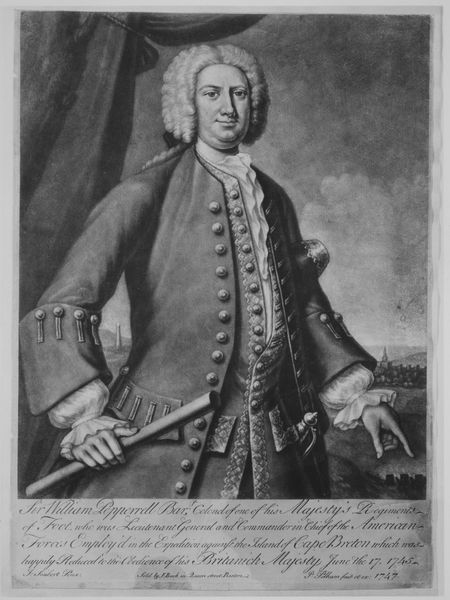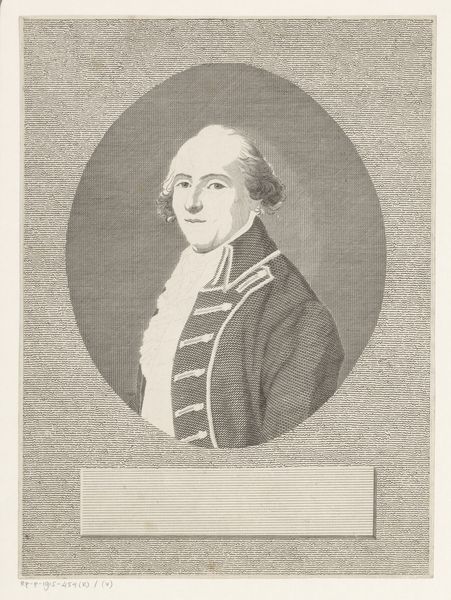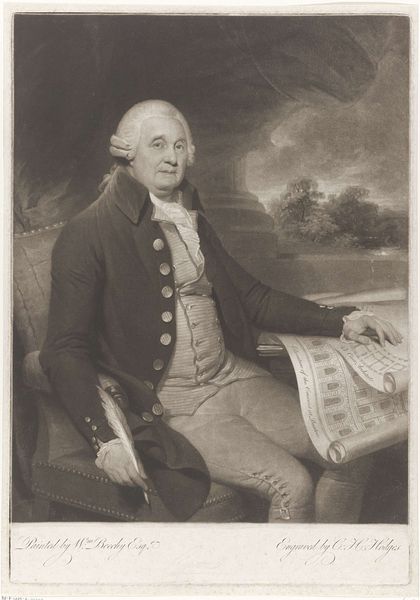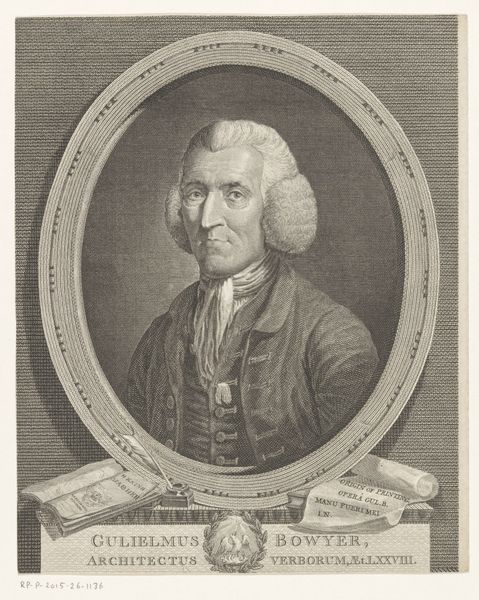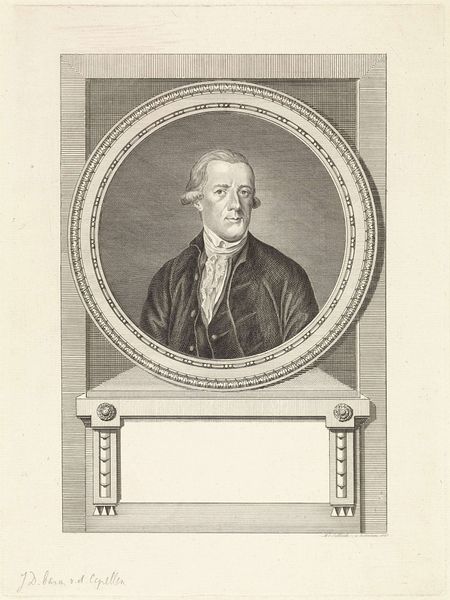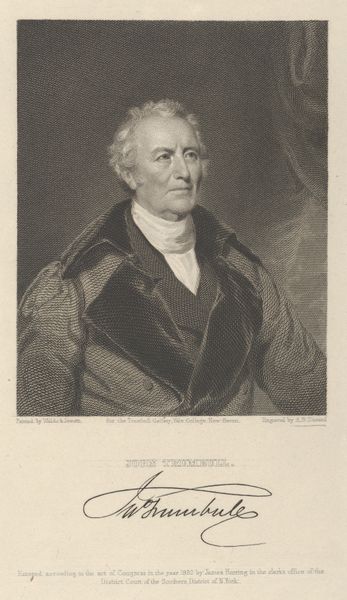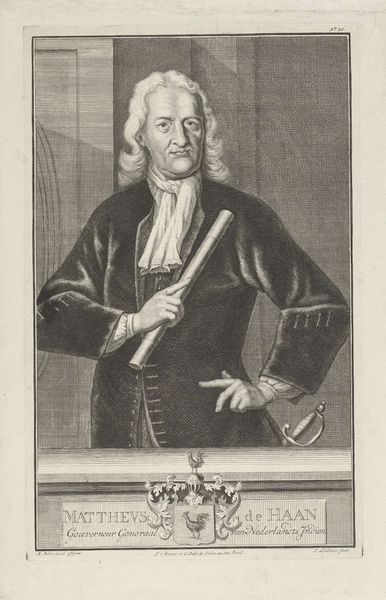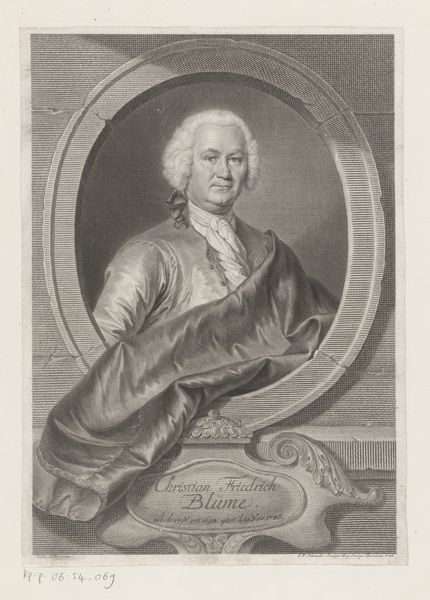
Copyright: CC0 1.0
Curator: This is William Sharp's portrait of Samuel More, engraved likely around the turn of the 19th century. What strikes you initially? Editor: The overall impression is one of composed formality, almost severity, softened only by the book in his hand. It reads as a very gendered and classed depiction. Curator: Indeed. More was the Secretary of the Society Instituted at London for the Encouragement of Arts, Manufactures, and Commerce, now known as the Royal Society of Arts. This portrait served to publicly recognize him. Editor: So, a depiction intended to cement More's position within London's burgeoning economic and intellectual networks? Curator: Precisely. It's fascinating how Sharp uses the visual language of the era to project power and intellectualism. Notice the quill, the books—symbols of knowledge and authority. Editor: And who gets to be in the room where it happens, as they say. It really speaks to the construction of elite identity during this period, but also who gets remembered. Curator: Yes. It's a reminder that even seemingly straightforward portraits are complex cultural artifacts. Editor: Absolutely, and the stories they tell, both intentionally and unintentionally, continue to resonate today.
Comments
No comments
Be the first to comment and join the conversation on the ultimate creative platform.
